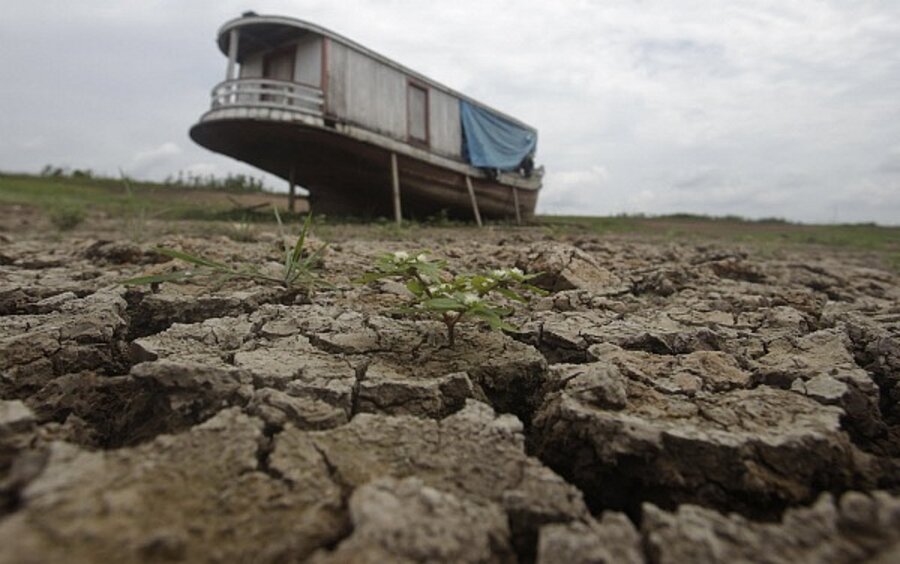Amazon drought: A growing concern
Loading...
Scientists are keeping a wary eye on the Amazon's rain forests after a severe drought struck some 1.2 million square miles of forest last year.
It marked the second drought in five years severe enough to be considered a once-a-century event. The previous drought, in 2005, affected 734,000 square miles of forest, according to an analysis published Friday in the journal Science.
During the 2010 event, water coursing along the Rio Negro, a tributary of the Amazon, dropped to its lowest levels on record.
In both cases, the droughts were tied to unusually warm surface waters in the Atlantic Ocean.
The Amazon's vast rain forests typically pull some 1.5 billion tons of carbon dioxide from the air each year, storing the carbon in their wood and offsetting CO2 emissions that come as humans burn fossil fuels and clear forests for farming.
Two once-a-century events doesn't mean one actually occurs every 100 years but rather represents along-term average recurrence rate. It's possible to experience two "floods of the century" within five years, but it's statistically rare. With some climate models projecting a drying over the Amazon as the global climate continues to warm, researchers are keeping close watch for changes in the recurrence rate for such extreme droughts.
"If events like this happen more often, the Amazon rainforest would reach a point where it shifts from being a valuable carbon sink slowing climate change to a major source of greenhouse gases that could speed it up," notes Simon Lewis, a researcher at the University of Leeds in Britain and the study's lead author, in a prepared statement.
The team, which included researchers from the US and Brazil, used satellite data from the Tropical Rainfall Measuring Mission, a joint project between NASA and Japan's space agency, JAXA, to take the measure of rainfall during both droughts.
They combined the data with estimates of water loss from soil and plants, as well as measurements made as a follow-up to the 2005 drought, to estimate tree loss and its effect on the region's carbon emissions as dead trees decompose.
The team calculates that once that decomposition process has kicked in completely, the dead trees will release over time some 5 billion tons of CO2. The team suggests the loss of trees from the two droughts combined could offset the increases in carbon uptake the forest experienced during the intervening non-drought years.
The work represents an initial estimate with significant uncertainties, the researchers acknowledge. Much hinges on soil conditions in the three "epicenters" of last year's drought, as well as whether the most drought-susceptible trees fell to the 2005 drought, or were merely weakened enough to succumb to the 2010 event.
If such droughts become more common, drought-tolerant species may move into the affected regions, the researchers acknowledge. But they also tend to store less carbon as they grow.





